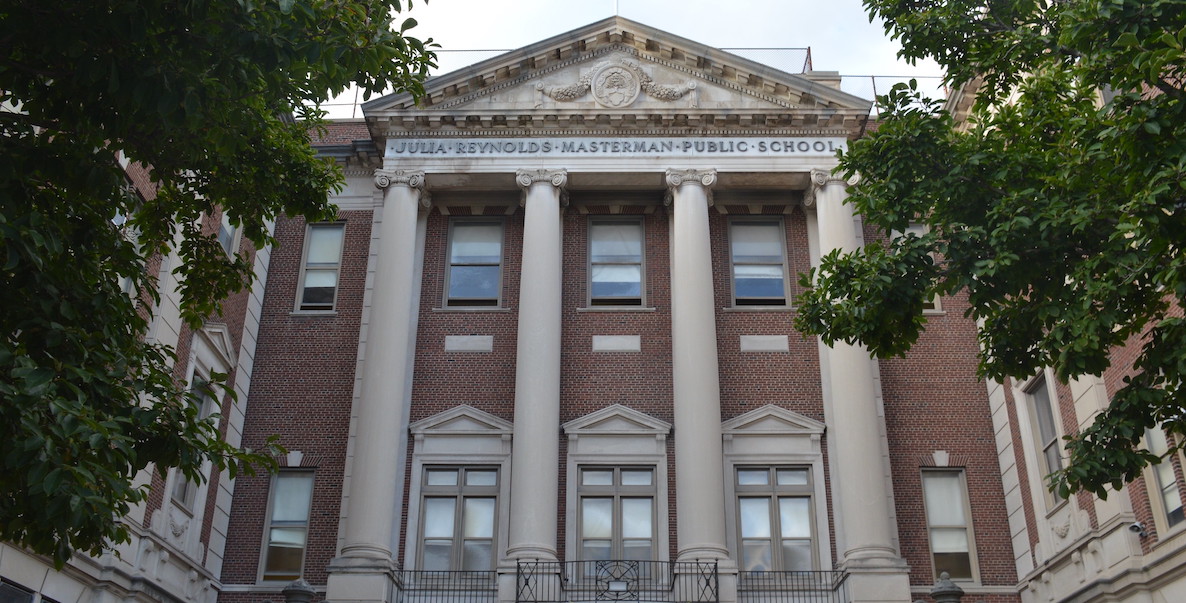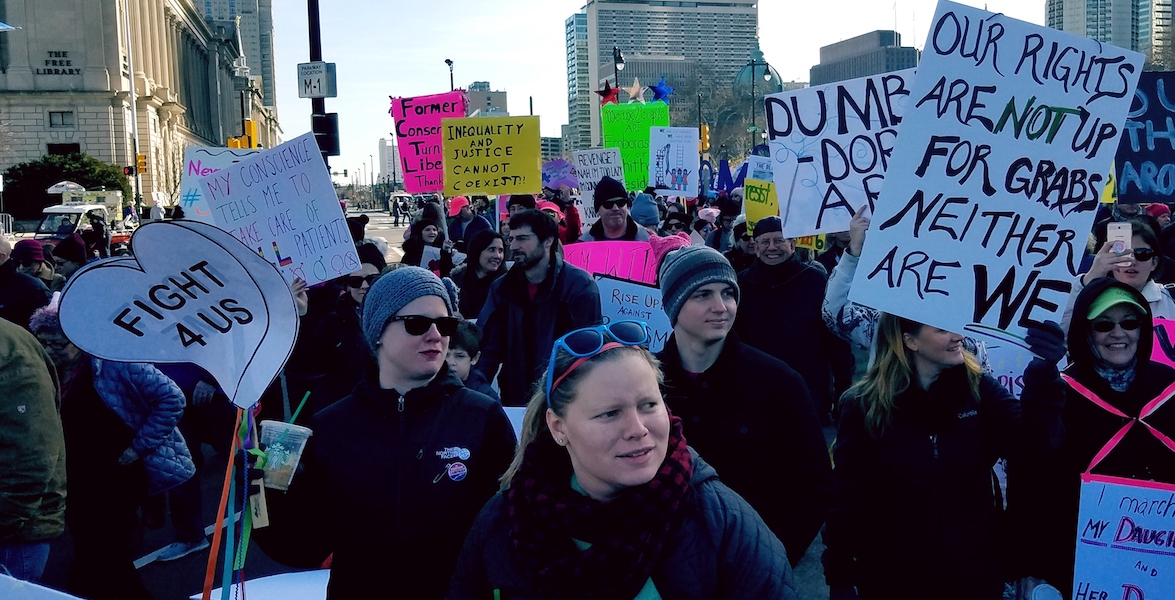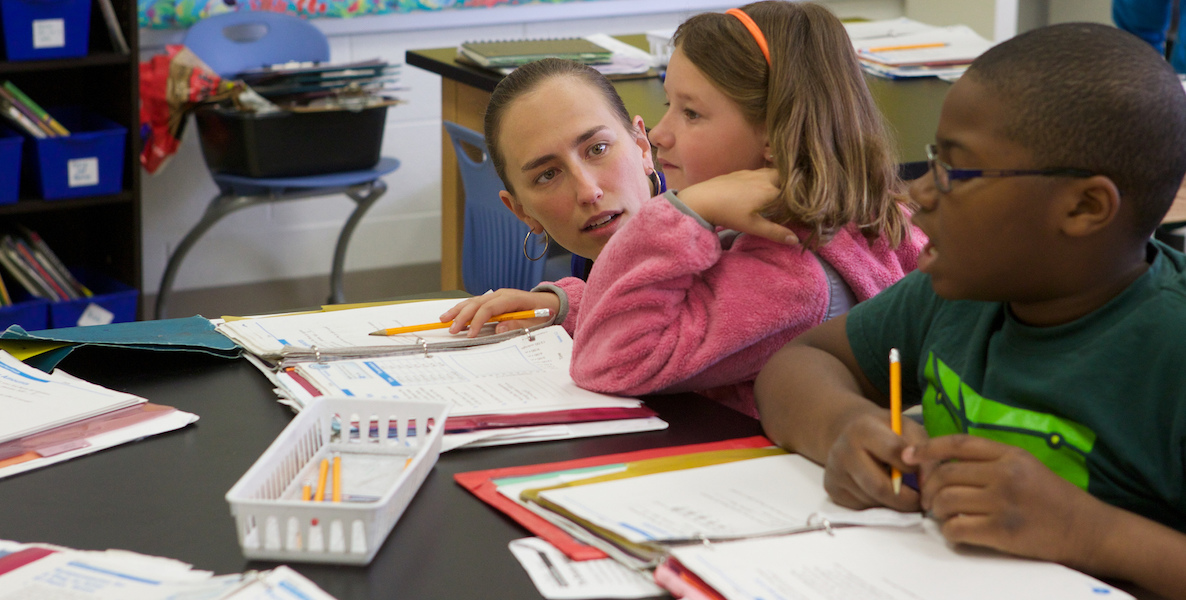Several years ago, during a review of the teacher training program at the University of Michigan’s School of Education, Dean Elizabeth Moje uncovered an unexpected—and disheartening—piece of information: The more time her students spent in nearby Detroit schools applying the knowledge they’d been taught, the less confident they felt about using the skills they’d mastered in their own college classrooms.
Be Part of the Solution
Become a Citizen member.This was after months of training, at one of the top-ranked teacher education programs in the country. And it remained true for Michigan graduates who went on to work in urban settings. Out of 260 alumnae surveyed across the country, the only ones with less than stellar ratings were the eight who taught at city schools.
“They’d say things like, ‘I know we should be doing more with reading texts, but there are no texts in the classroom.’ Or, ‘We can’t give homework because the teacher said they won’t do it.’ Or, ‘The kids don’t read well enough, and we don’t have time to teach them,’” Moje says. “A lot of times when teachers fail, the blame is placed on teacher ed programs. But we found it was about the relationship between teacher education and the practice they were getting in the field.”
“In a teaching hospital, everyone has two primary goals: one is patient care; two is education of new professionals,” Moje says. “That seems right to me.”
Moje’s research hit on an issue that afflicts pretty much every urban district in America, including Philadelphia. Despite their degrees from schools as lauded as Penn, or Michigan, new teachers often don’t know how to manage an urban classroom, with its unique set of social, academic and financial issues. This is a significant factor among the 50 percent of teachers who leave the profession within five years, and in why academic improvement among the city’s neediest students is often slow.
And it’s why at Michigan, Moje has spent the last several years shifting how the university trains students interested in urban education, to give them more time in classrooms, with better and more focused training from mentors and peers—a model based on how medical schools train future doctors. Michigan now sends cohorts of history and social science education majors—who they call interns—on rotations among a select number of excellent professional teachers with whom the school has worked. Together, the students learn particular lessons from each teacher, and learn to apply them in the classrooms.
One teacher, for example, with a class of 16 new immigrants learning 9th grade American history is a master planner. Within the first week of the program, she had shared her detailed curriculum with the four teacher interns, and set them to teaching groups of four students each. She, in turn, roved around the room, working with each of them to improve their skills.
“It was phenomenal,” Moje says. “They were collaborating, taking on a more professional stance, able to lead classrooms much sooner, and increasing in skill and confidence. We see markedly different results in our interns. And we’re seeing more of them want to do placements in urban districts.”
Support Philly schoolsDo Something
Now, Michigan is set to take its approach one step further, thanks to a collaboration with Dr. Jonathan Zimmerman, the director of medical education at Beaumont Hospital-Dearborn. A few years ago, Zimmerman visited an apprentice classroom with Moje and pointed out what he saw as a flaw in the design: Each of the inexperienced teachers was working on their own, with occasional feedback from their mentor teacher. None had the chance to learn from each other. Instead, he suggested the university consider “near peer” cohorts, like they have in medical school, where at every level, there is someone just a little bit more senior who can give feedback, suggestions and recognize struggles a little more readily.
To that end, Michigan next year will launch a multi-year apprenticeship teaching program in a Detroit school that will become, in essence, a teaching school—like a teaching hospital, but for educators. Starting with one grade, the school will pair a mentor teacher with a field instructor from University of Michigan; a graduate education student; and undergraduate education students who want to be urban teachers. Eventually, 50 to 60 percent of teachers in the school will be veterans, and the rest interns. This will allow student teachers the benefit of not only their professional mentors, but also their peers.
Once they graduate out of the residency, the new teachers will then get jobs at the school for an additional three years, allowing them to continue working with their Michigan instructors and mentors for the first few critical years of their career. Only once they’ve completed that internship will they go on to other teaching jobs, by now well-trained and prepared for the rigors of urban teaching.
The teacher intern program at Michigan would be the first dramatic upheaval in the way teachers are trained in this country in at least a generation—an upheaval that has been long in coming.
“We know we need more time with these teacher interns,” Moje says. “These will be certified teachers, but unlike typical first year teachers who are on their own, they will be in well-supported environments from the start.”
The teacher intern program at Michigan would be the first dramatic upheaval in the way teachers are trained in this country in at least a generation—an upheaval that has been long in coming. As far back as 1986, a group of education school deans produced a report that attributed a lot of the blame for struggling schools on the training teachers were receiving in college. Since then, others—most notably, Arthur Levine, the former president of Columbia Teachers College—have echoed their call for change. But decades later, there has been only incremental progress.
At the same time, the nation is facing a teacher shortage like never before. As school started in Philly this year, Superintendent Bill Hite celebrated the fact that the district only needed to hire 550 new teachers over the summer—a number that has been consistently going down the last few years. But that is still 550 jobs that were vacant in June, one reason Gov. Tom Wolf in July announced $2 million in funding to eight Pennsylvania universities to develop or implement year-long teacher residencies, to better prepare new teachers and keep them in the classroom.
In Philly, Penn’s Graduate School of Education several years ago revamped its Urban Teaching Apprenticeship Program for the same reasons as in Michigan—preparing teachers to be urban educators—but with a far more condensed time frame. The nine-month program starts in the summer in the neighborhood where apprentices will be student teaching in the fall, giving them the chance to know some of the children and adults, how they approach learning, what the culture and identity of the community is. Starting in late August, apprentices begin working alongside district teachers and their mentors, who are retired or experienced mid-career teachers who Penn sends into the classrooms to observe and assist them.
From Roxanne Patel ShepelavyRead More
As the year goes on, the student teachers spend increasingly more time in front of children, until by April they will have around 400 hours in a public school classroom, about twice the state requirement for teacher certification. Maureen Cotterill, program manager for the Teacher Apprenticeship Program, says “the vast majority” of its graduates now stay in teaching for more than five years.
In many of the schools, like Kensington Health Sciences Academy, Penn also places student nurses and school counselors through a program called Penn Futures that trains student teachers and support staff together to address the wraparound needs of urban students. “The more we learn about how kids learn, and how trauma affects how they learn, the more we realize we need to address all these things,” says Penn Education spokesman Jeff Frantz. “We have student teachers, nurses and counselors working together to learn, and to learn how to work together.” (This program, relatively new to Philly, is similar to one at Michigan’s ed school.)
As school started in Philly this year, Superintendent Bill Hite celebrated the fact that the district only needed to hire 550 new teachers over the summer—a number that has been consistently going down the last few years. But that is still 550 jobs that were vacant in June.
Maddie Luebbert, a recent graduate of Penn’s program, did their apprenticeship at Kensington, and also got their first post-grad job there, as an English teacher—which allowed them, incidentally, to stay with their mentor, still have access to Penn teachers on site, and to serve as a resource for Penn students currently in the program. That is relatively rare, though. Luebbert—whose mother and sister are both Philly public school teachers, too—felt as prepared to start on the first day of school last year as one could be…which means sort of prepared.
“I know lots of teachers,” says Luebbert (who uses they/them pronouns). “What I’ve heard across the board is, ‘You’re going to learn on the job. At the end of the day, you figure out what you do in the classroom by doing it.’ In Philly, a teacher really has to seek out networks of support; they are not a given.”
It will take years of careful study from both the teacher and student perspectives to know if Moje’s plan for Michigan could succeed—if scaled up—in bringing needed change to urban education. But it’s clear that the teacher education system we’ve had until now has failed to produce the teachers we need for the students of today. And the Michigan program speaks to something teachers themselves often say is important to their profession and to their students: Their own learning. Moje says it was Zimmerman, the doctor, who made her understand that connection.
“He said, ‘In a teaching hospital, everyone has two primary goals: one is patient care; two is education of new professionals,’” Moje recalls. “That seems right to me.”
Photo: U.S. Department of Education via Flickr






